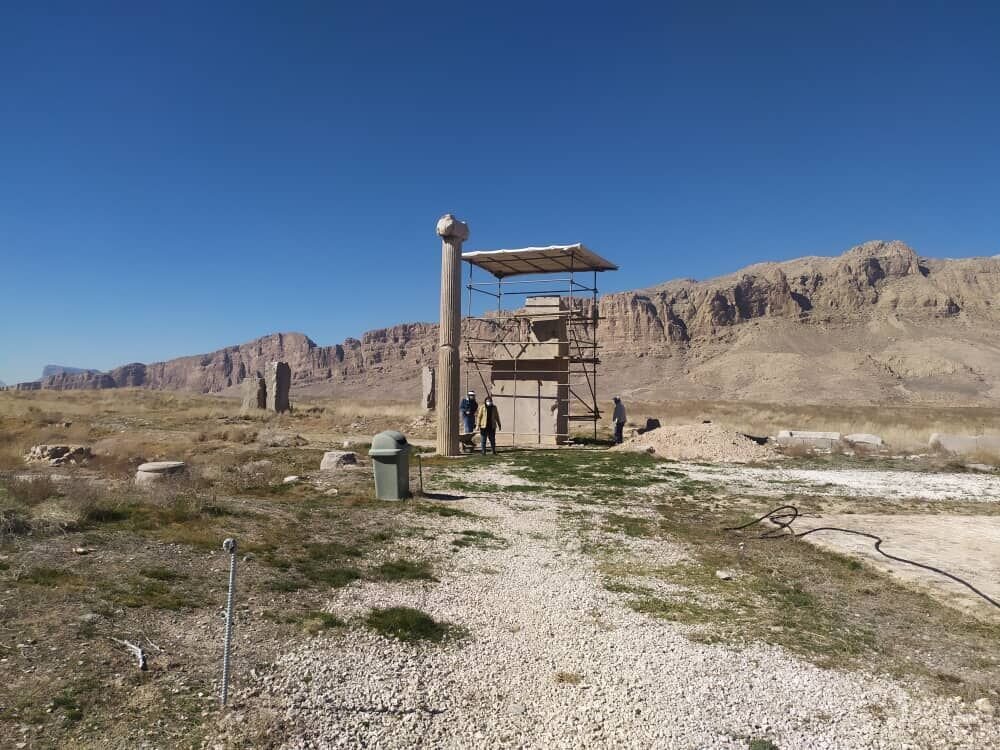Istakhr, once capital of the Sasanian Empire, undergoes restoration

TEHRAN- A fresh archaeological season has commenced on the southern Iranian city of Istakhr, which was briefly served as the first capital of the mighty Sasanian Empire from 224 to 226 CE.
Istakhr (also spelled Estakhr) is located in the vicinity of the UNESCO-registered Persepolis, the ceremonial capital of the Achaemenid Empire (c. 550–330 BC).
Similar archaeological projects, concerning the documentation and restoration of the ancient city, have been carried out over the past couple of years due to the significance of Istakhr, IRNA quoted Hamid Fadaei, director of the World Heritage, as saying on Sunday.
Improving the old access routes as well as establishing new routes to the historical works of the area and setting up a restoration workshop are parts of the project, the official added.
The project is being supported by a team of archaeologists, cultural heritage experts, and restoration specialists, and a center for them is being created, he added.
From one point of view, its history stretches back to 224 CE, when a Persian nobleman named Ardashir, son of Papak, son of Sasan, dethroned the lawful ruler in Persia, Artabanus IV, king of the Parthian Empire.
As one of his residences, according to livius.org, the new ruler chose Istakhr: situated near Persepolis, the capital of the Achaemenids, it allowed the new Sasanian dynasty to identify itself with a glorious past. The builders of Istakhr often reused architectural elements from the monuments of Persepolis. The Achaemenid royal tombs of Naqsh-e Rostam are not far from Istakhr too.
The city, which had strong walls, repulsed the first Arab attack in c.644, but was captured and sacked in c.650. Although the site was not abandoned, most people moved to Shiraz (which was founded in 684). Once, as an Islamic town, it was enclosed by fortification walls with rounded towers.
Among the kinds of pottery excavated from the Islamic stratum, molded ware is found very frequently. These light-green vessels were not only of very high quality but also manifested a unique method of pottery making. The upper and lower halves, with their sculptured decorations, were always molded separately; the two halves, often showing the same pattern, were then joined together.
Also from the Islamic period, but less frequent, are pitchers with floral designs in red, yellow, and black. Unfortunately, excavations of the site produced only a few of the famous and very rare lusterware vessels with their metallic sheen over a golden-yellowish body. There is considerable controversy about this pottery and whether it was produced in Iran or imported from Mesopotamia.
Among other finds were clay figurines of animals. There were also stone and bronze objects, such as lamps, small vessels, and several utensils used in daily life. Also found were objects of iridescent glass and personal ornaments ranging from clay to gold.
Today, Istakhr is nothing but a plain full of sherds, scattered architectural remains, and a few ruins. The walled-in area measured 1,400 x 650 meters and was surrounded by a ditch that was connected to the river Pulvar.
Under the Sasanians, Iranian art experienced a general renaissance. Architecture often took grandiose proportions, such as the palaces at Ctesiphon, Firouzabad, and Saravan.
ABU/AFM
